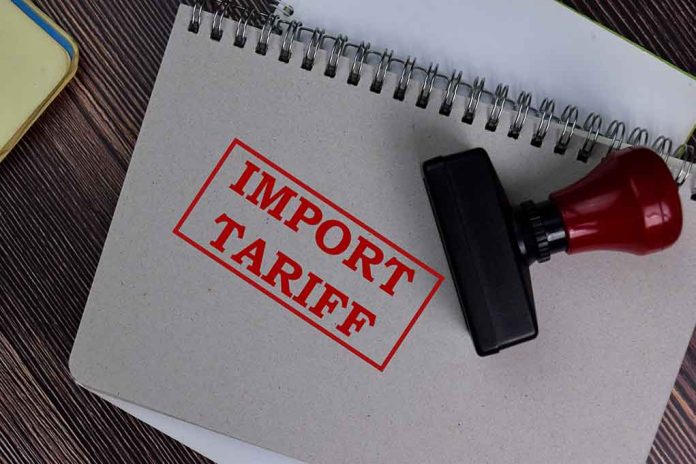
President Trump’s plan to impose a 25% tariff on steel and aluminum imports sparks debate over economic benefits and consumer costs.
Top Takeaways
- Trump plans to implement 25% tariffs on all steel and aluminum imports to protect U.S. manufacturers.
- Economists warn of potential price hikes in consumer goods, particularly in automotive and appliance sectors.
- The move aims to boost domestic production but may lead to retaliatory tariffs from trade partners.
- Concerns arise about exacerbating inflation and increasing living costs for Americans.
- Long-term impact depends on manufacturers’ responses and potential increase in domestic production.
Trump’s Tariff Strategy: Protecting American Industry
In a bold move to prioritize American manufacturing, President Trump has announced plans to impose a 25% tariff on all steel and aluminum imports. This decision, aimed at revitalizing U.S. industries, is expected to encourage companies to open plants domestically and shift towards U.S.-made products. The tariffs are part of a broader strategy to level the playing field in international trade, with Trump emphasizing the need for reciprocal tariff charges.
The President’s stance on tariffs extends beyond steel and aluminum. He has authorized similar measures on imports from Mexico, Canada, and China, viewing tariffs as a tool to encourage cooperation on issues like illegal immigration and fentanyl smuggling. Trump’s approach also aims to promote domestic manufacturing and increase federal revenue.
Economic Implications: A Double-Edged Sword
While the tariffs are designed to boost U.S. manufacturing, economists warn of potential unintended consequences. The most immediate concern is the likelihood of price increases for products using steel and aluminum, such as vehicles and appliances. Experts predict that a 25% tariff on steel could lead to a $1,000 to $1,500 increase in car costs, with the possibility of price hikes for U.S.-made steel as well.
“If you put a tax on imported steel and aluminum, you will raise the price of everything that uses that — cars first and foremost.” – Dean Baker
The impact could be even more severe if additional tariffs on Mexican and Canadian imports are implemented, potentially raising U.S. car prices by an average of $6,250. These price increases could contribute to higher inflation, a concern that has already been at the forefront of economic discussions.
International Repercussions and Trade Relations
The tariffs are expected to have significant international implications, particularly for Canada, which is a major exporter of steel and aluminum to the U.S. Canadian officials and industry groups have criticized the tariffs and called for retaliation, highlighting the potential for escalating trade tensions.
The European Union has also indicated its readiness to respond in kind, with France stating that there would be no hesitation in defending their interests. This potential for retaliatory measures raises concerns about a broader trade conflict that could further impact global economic stability.
Domestic Impact: Balancing Protection and Costs
While the tariffs aim to protect and boost U.S. industries, there are concerns about their impact on domestic manufacturers who rely on steel and aluminum inputs. The potential for increased costs could offset any benefits gained from protection against foreign competition. Additionally, previous tariffs implemented during Trump’s first term led to increased prices and job losses in manufacturing sectors.
The long-term impact on U.S. prices and industry competitiveness will largely depend on how manufacturers respond to the new tariffs. There is potential for increased domestic production, but this must be balanced against the risk of higher consumer prices and potential job losses in industries that rely on imported materials.
Public Perception and Political Implications
Despite the potential economic challenges, Trump’s tariff strategy appears to resonate with his base. However, a CBS News poll indicates that two-thirds of voters believe Trump isn’t doing enough to lower prices, despite positive approval ratings in other areas.
As the implementation of these tariffs approaches, all eyes will be on the economic indicators and consumer prices. The success or failure of this policy could have far-reaching implications for U.S. industry, international trade relations, and the economic well-being of American consumers.
Sources:
- Trump orders 25% tariffs on steel and aluminum. Here’s what experts say could become pricier.
- Trump imposes 25% tariffs on all aluminum and steel imports
- Trump says no exemptions with metal tariffs to start in March







